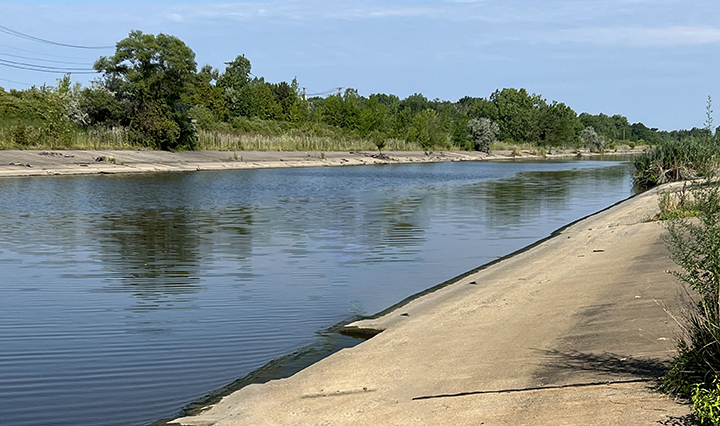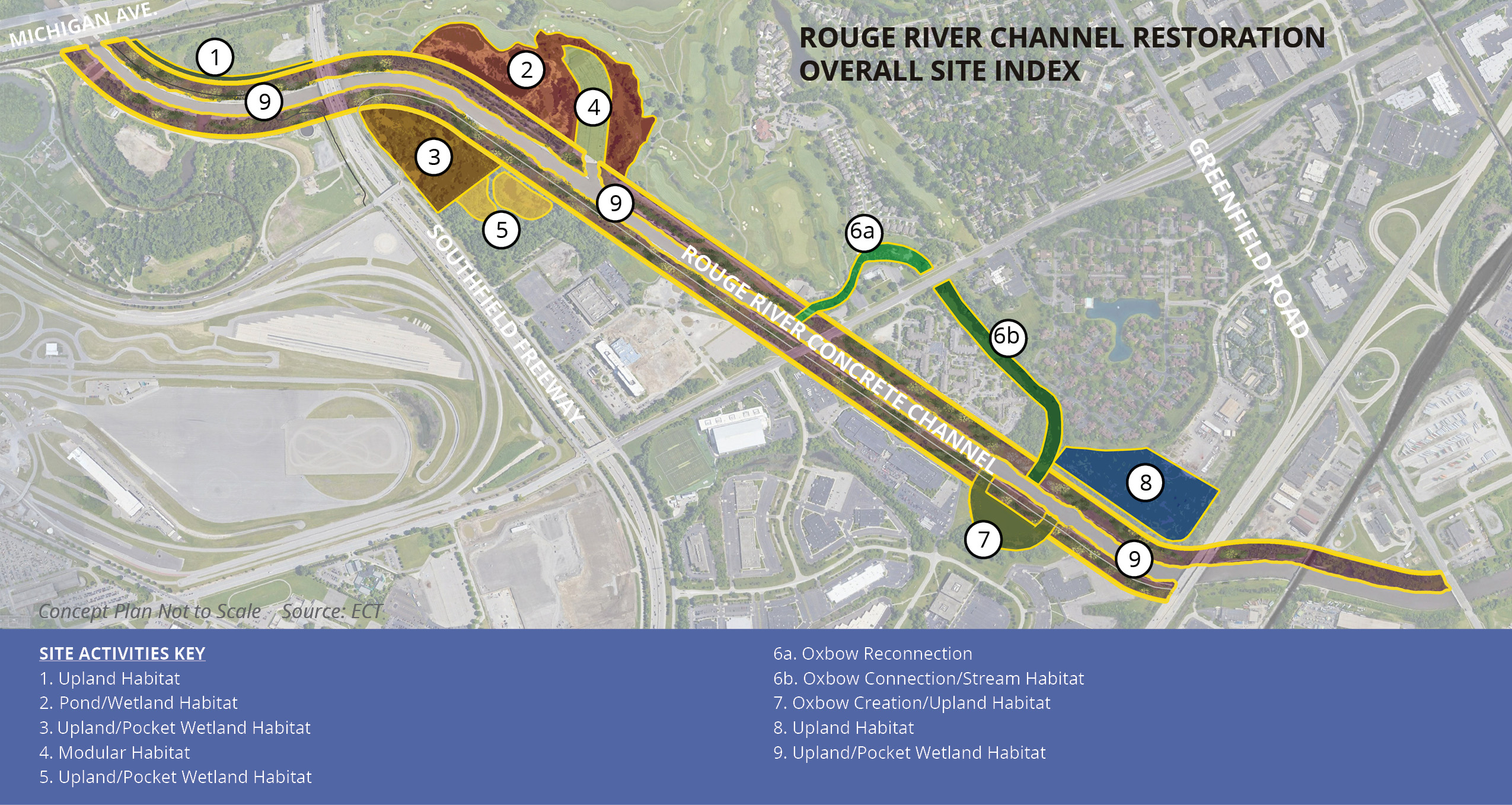Rouge River Concrete Channel
Habitat Restoration Design on the Concrete Channel
The U.S. Environmental Protection Agency (EPA), in partnership with U.S. Army Corps of Engineers (USACE), is developing the design plans for ecosystem restoration along the concrete channel that runs through Dearborn, Allen Park and Melvindale, Michigan. Building upon the restoration work that has been ongoing for 20+ years in the area, this current initiative will continue the effort to restore the river ecosystem and environment, without diminishing the effectiveness or function of the original Federal Flood Control Project (concrete channel). This design project is funded by the Bipartisan Infrastructure Law through the framework of the Great Lakes Restoration Initiative (GLRI). The Alliance of Rouge Communities is excited to be a partner on this project within the Rouge River Watershed and is happy to host this website which will serve as a repository to:
 |
|
 This design project is funded by the Bipartisan Infrastructure Law through the framework of the Great Lakes Restoration Initiative (GLRI). |
This restoration effort was chosen for its potential to improve species diversity and water quality in this section of the Rouge River by enhancing habitat alongside it and creating stream and wetland habitat. The construction of the concrete channel in the 1970s also impeded fish migration. The restoration effort aims to provide “resting areas” for fish and other species, similar to rest areas for people along a highway, as they migrate through the concrete portion of the Rouge River.
In partnership with a diverse stakeholder group, EPA and USACE are providing an opportunity to collaboratively restore an important previously neglected part of the ecosystem in southeast Michigan. The majority of the project area is on private property and the project team has begun discussions with the landowners to find possible habitat fits on their properties. The sites identified below are possible locations for these restoration activities.
